grounded
12 June – 7 August 2021 at Berthold Pott
Jonathan Binet, June Crespo, Lindsay Lawson, Johanna von Monkiewitsch, Michail Pirgelis, Dash Snow, Julie Villard & Simon Brossard
Exhibition Video
Installation Views:
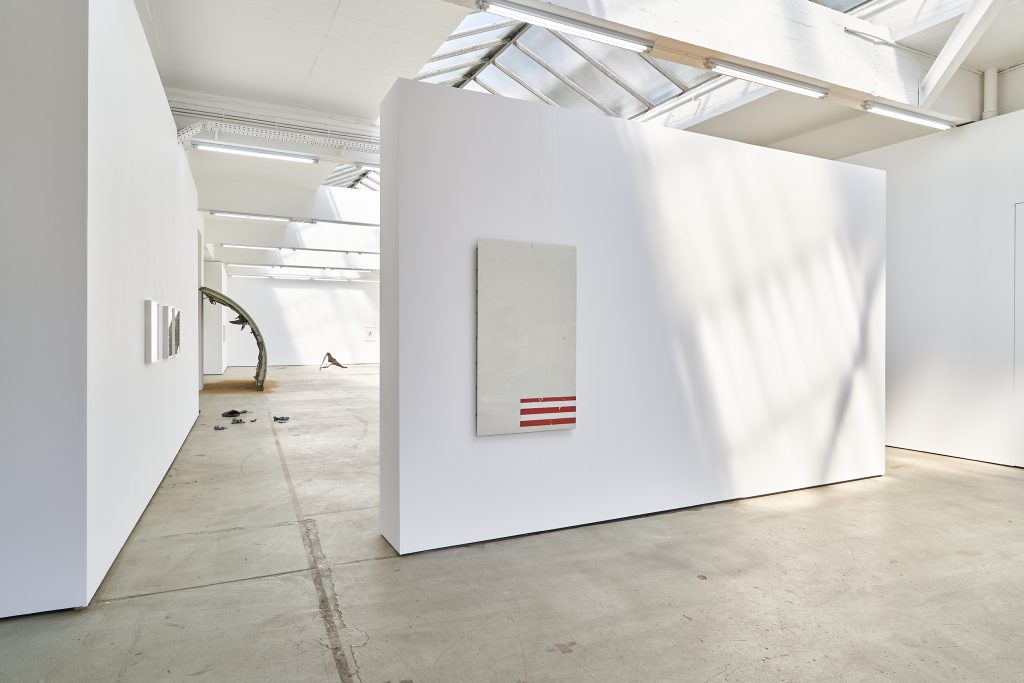




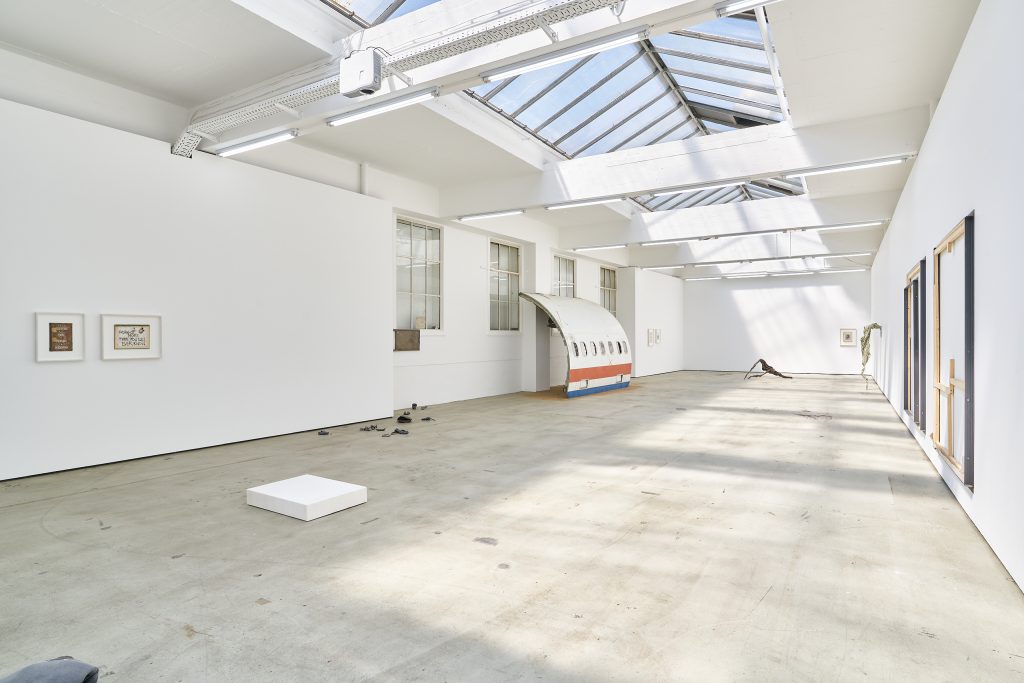
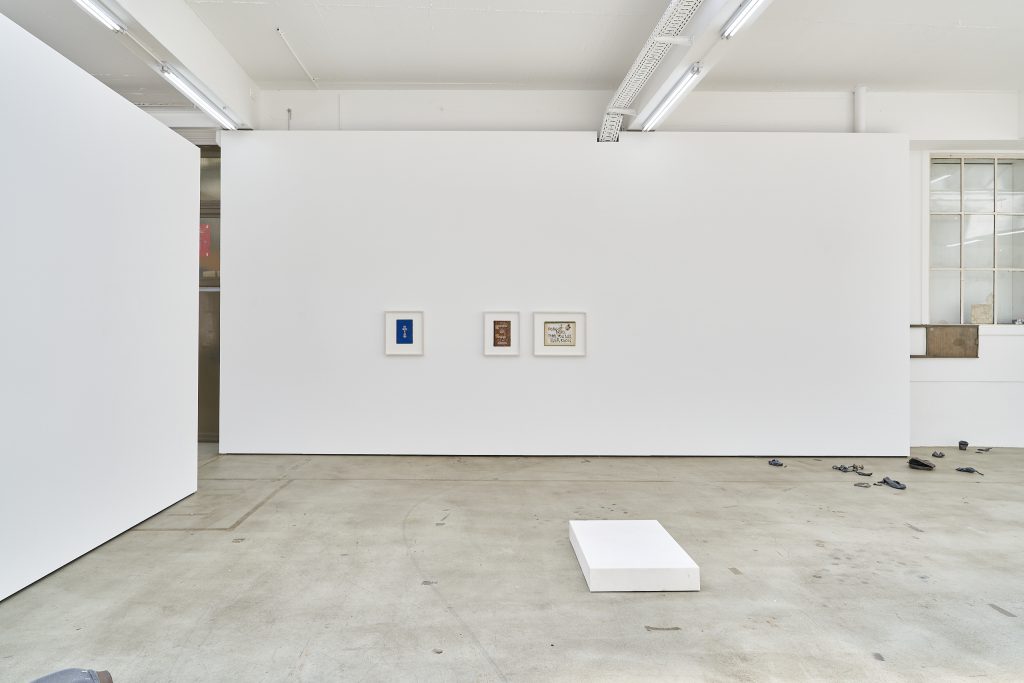

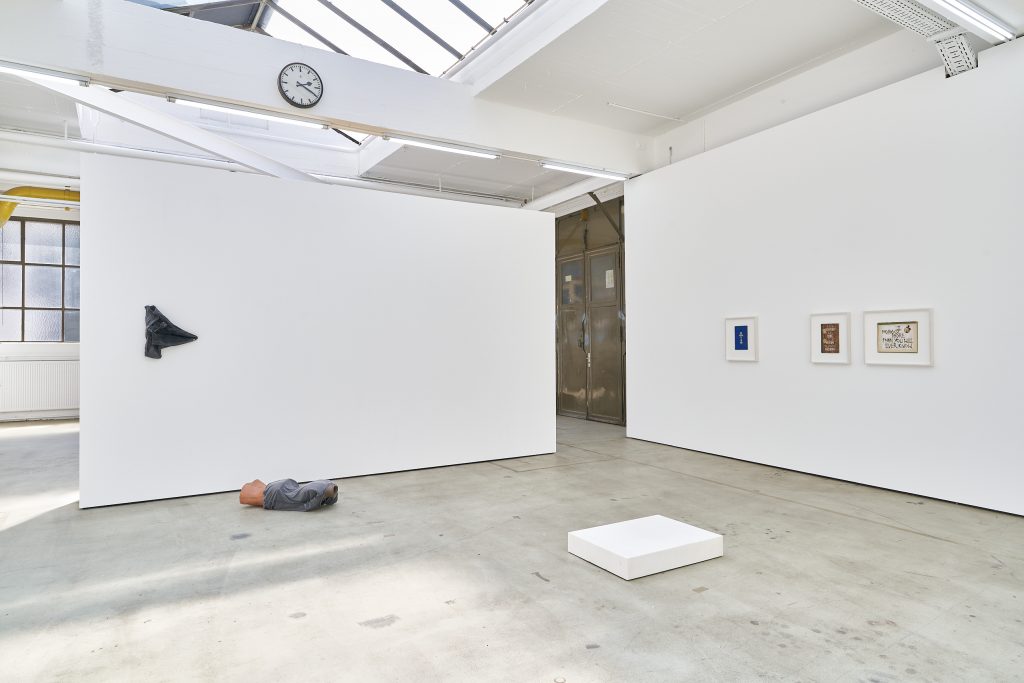
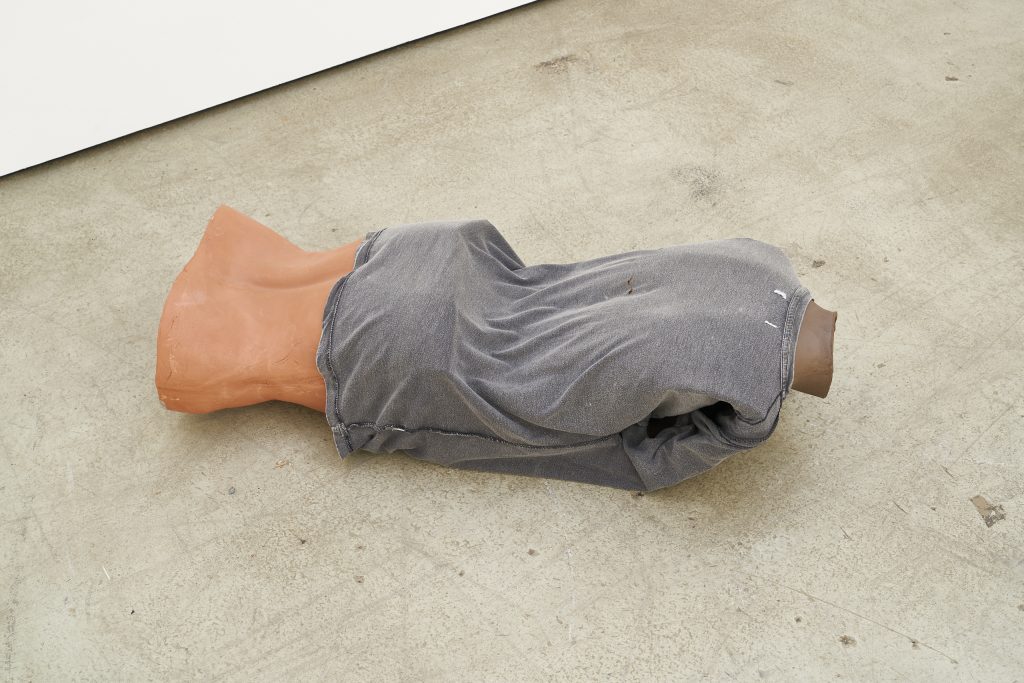
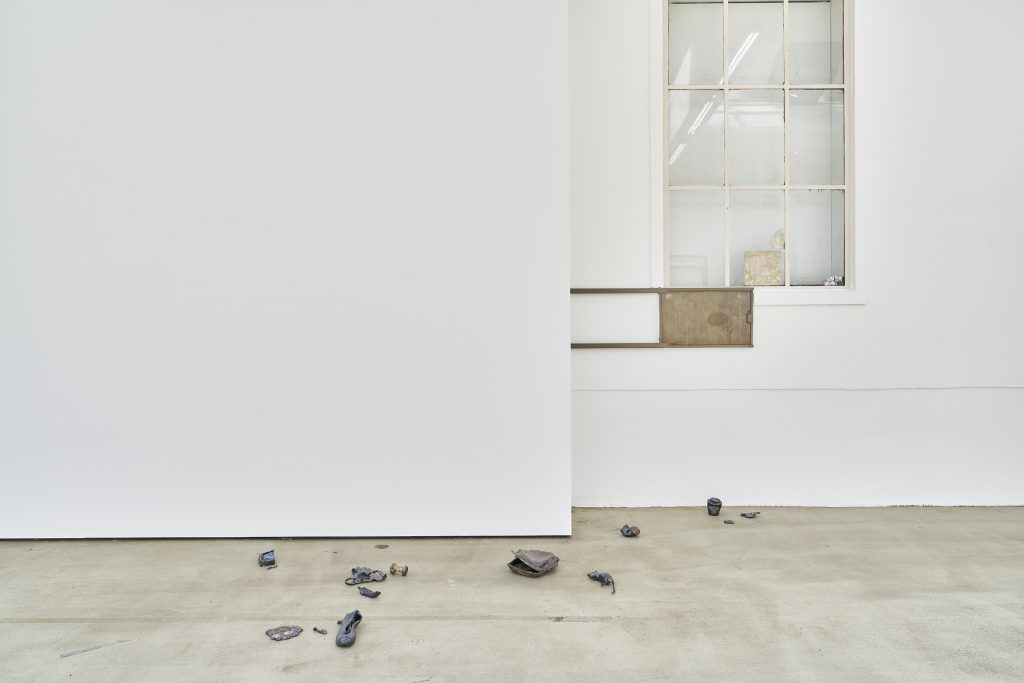



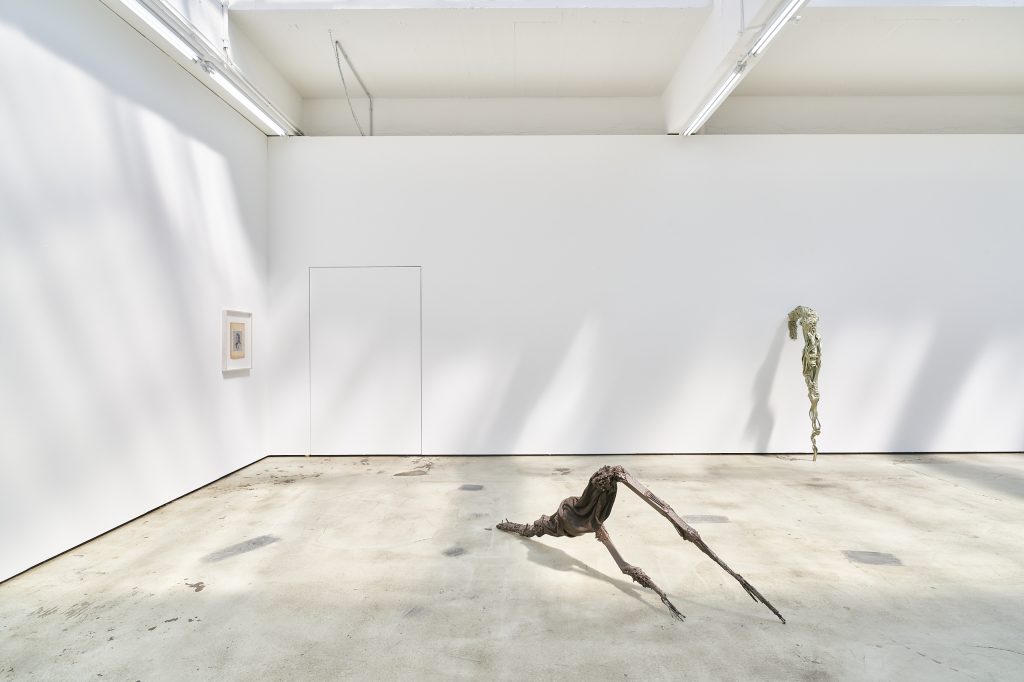
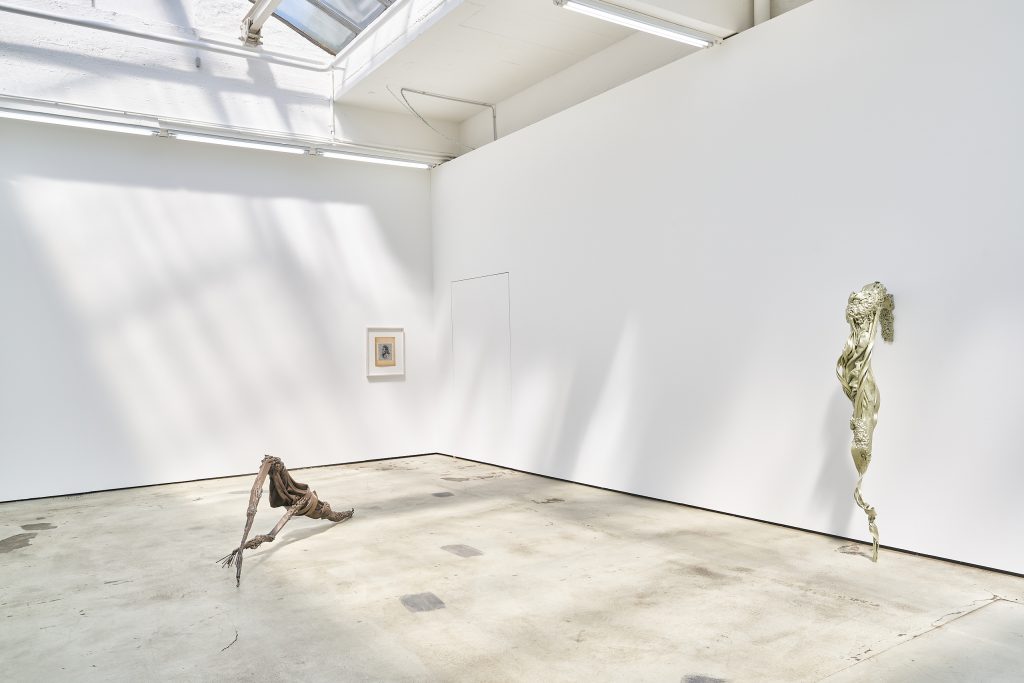

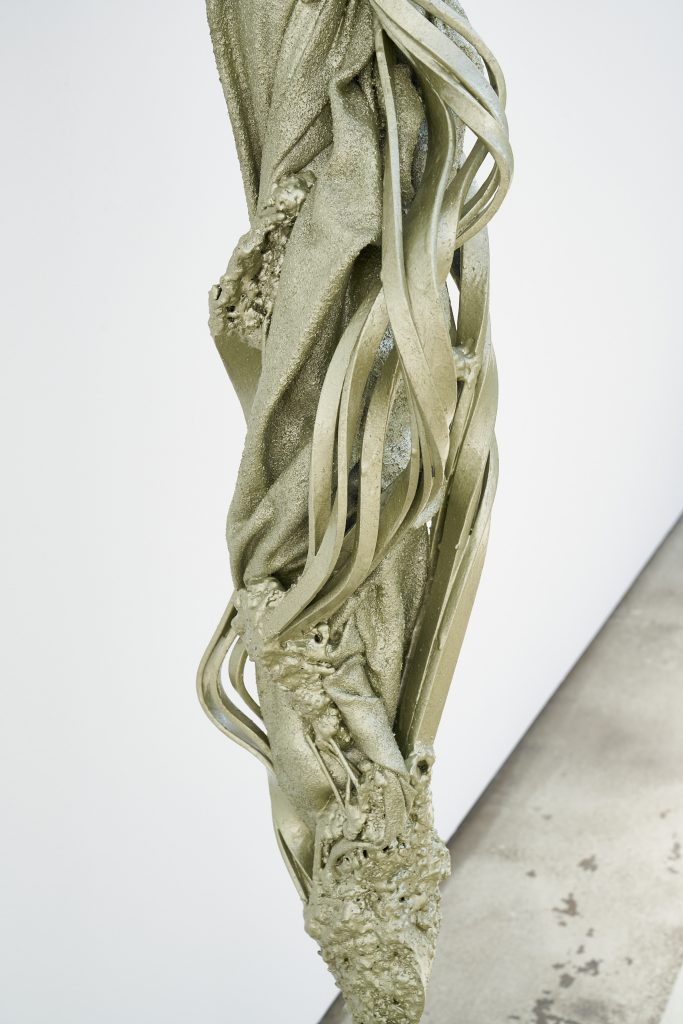
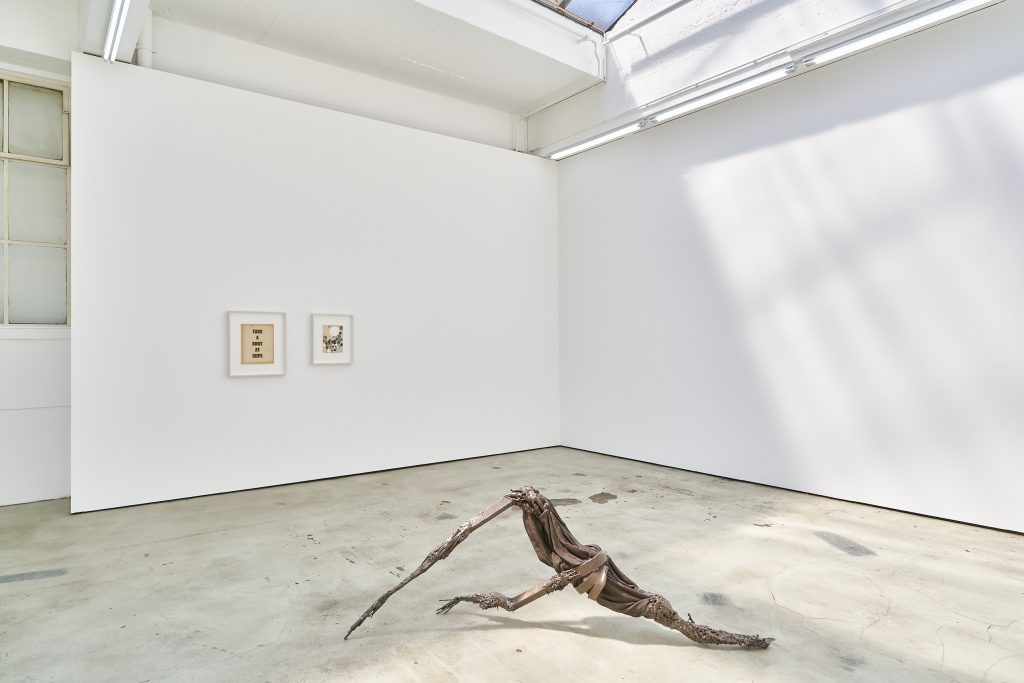
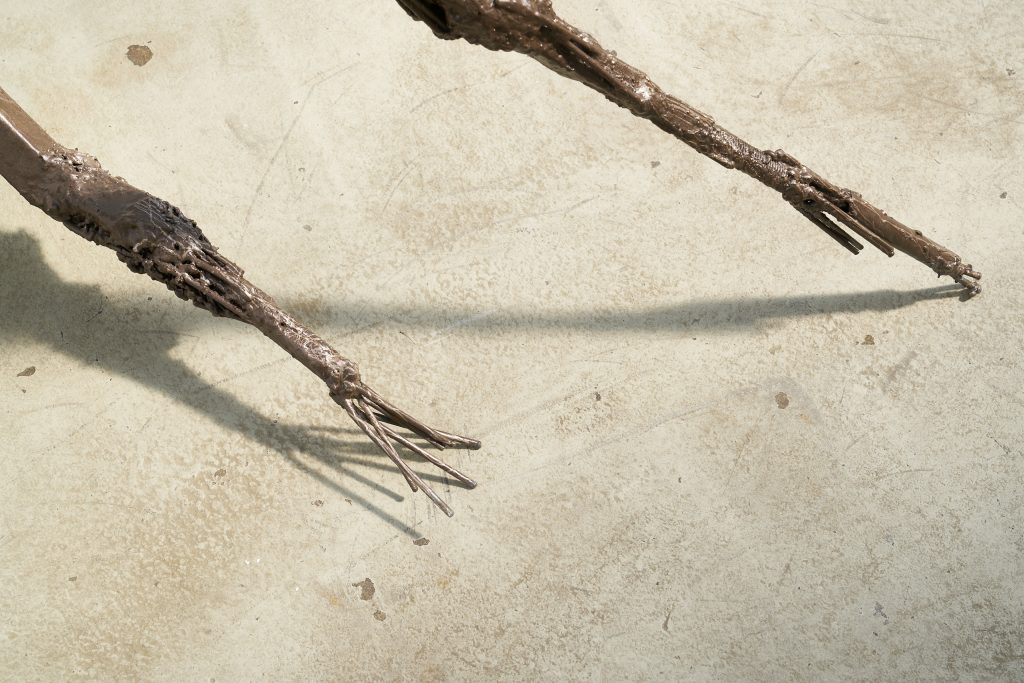
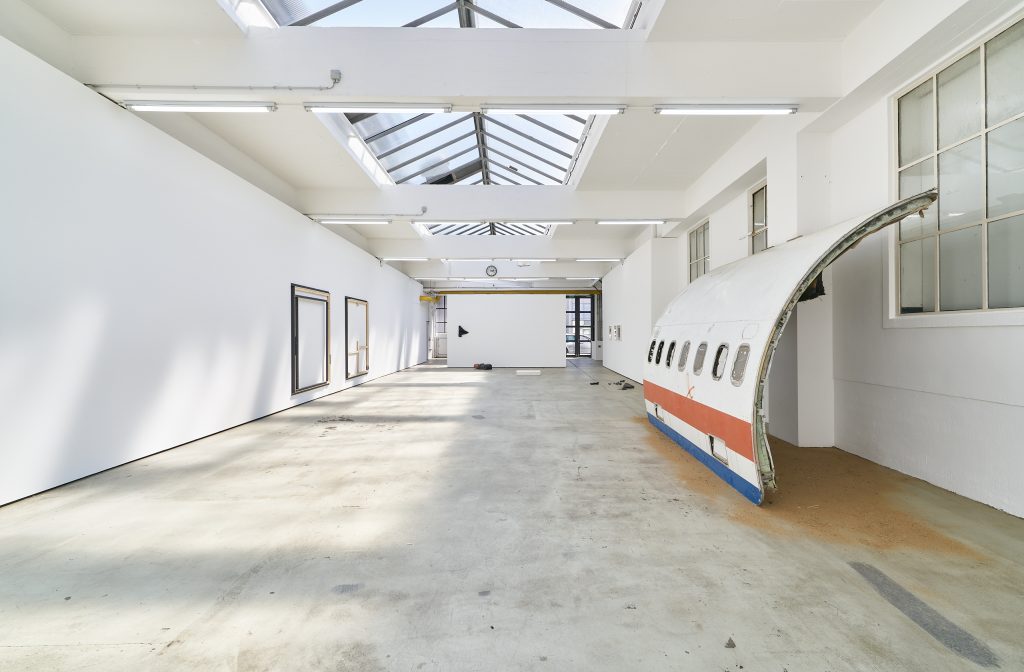
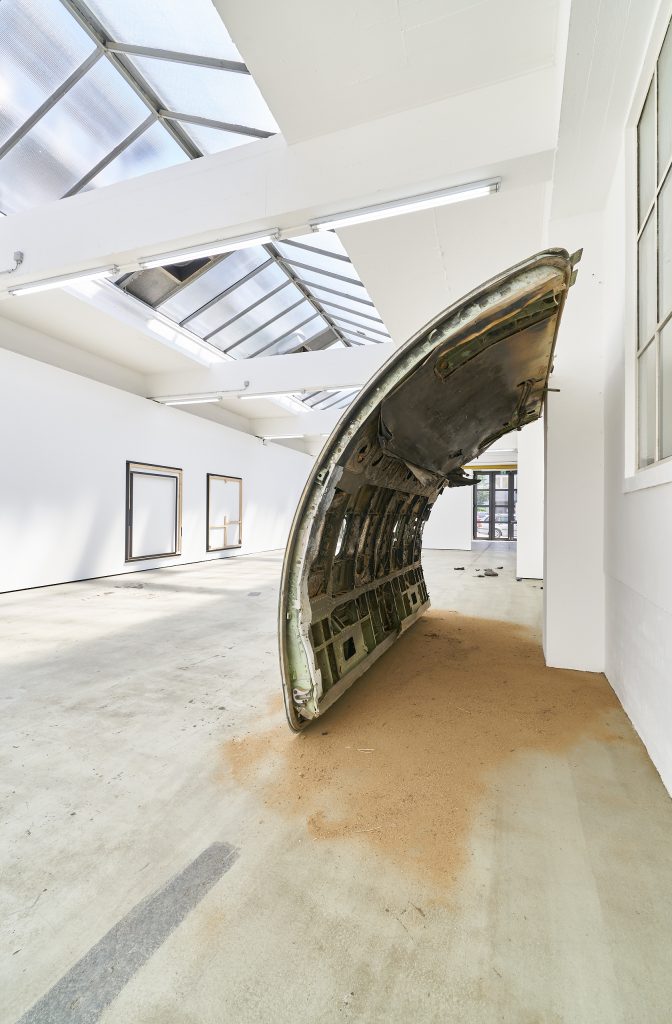

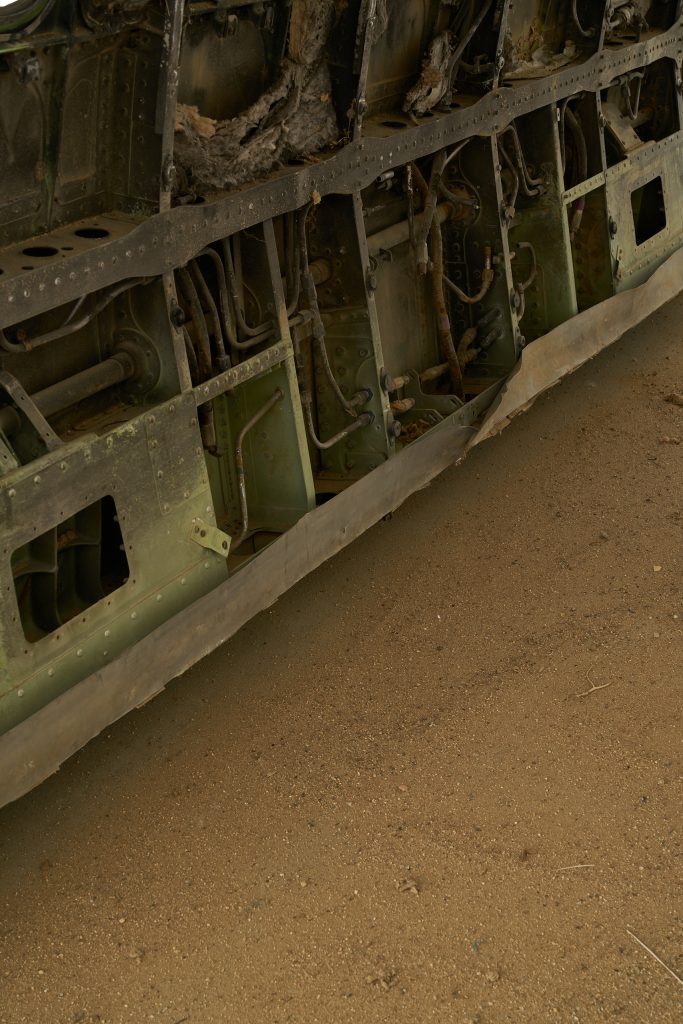



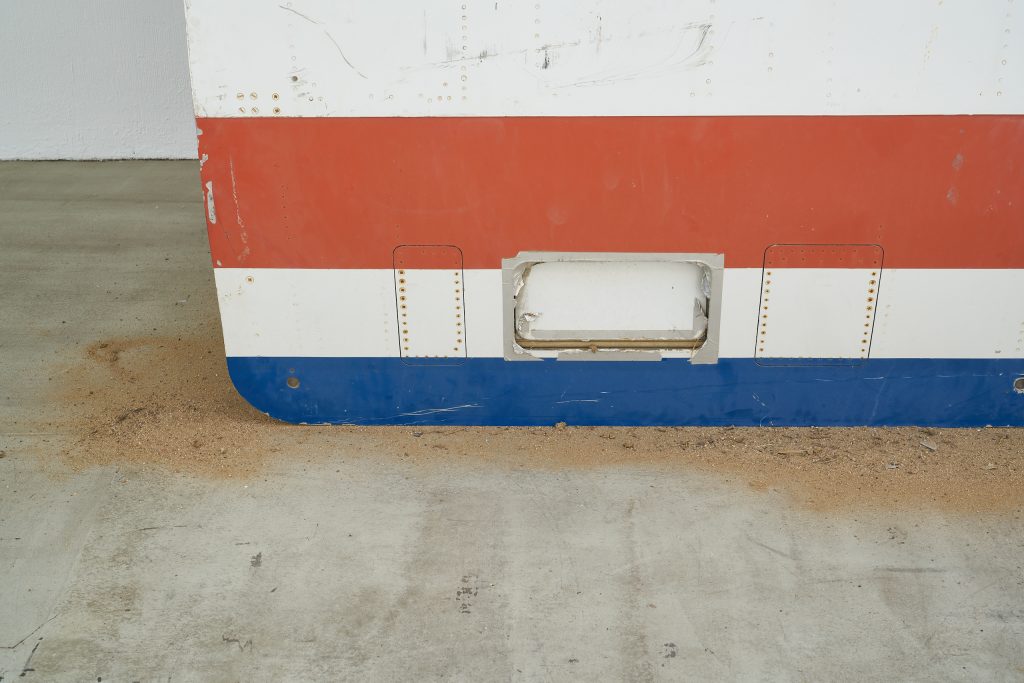
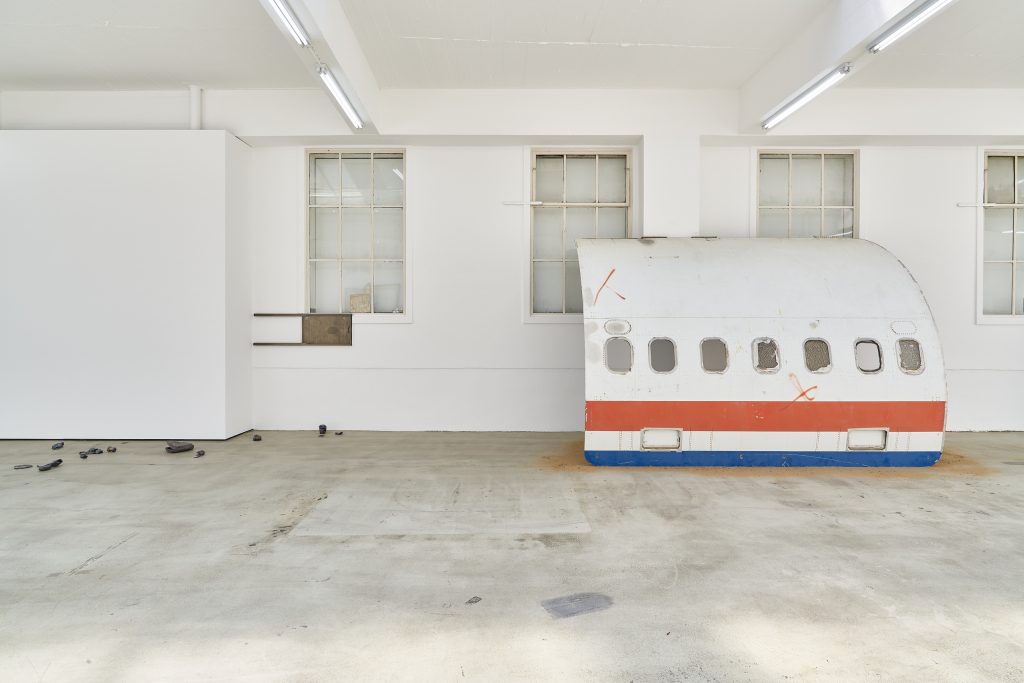

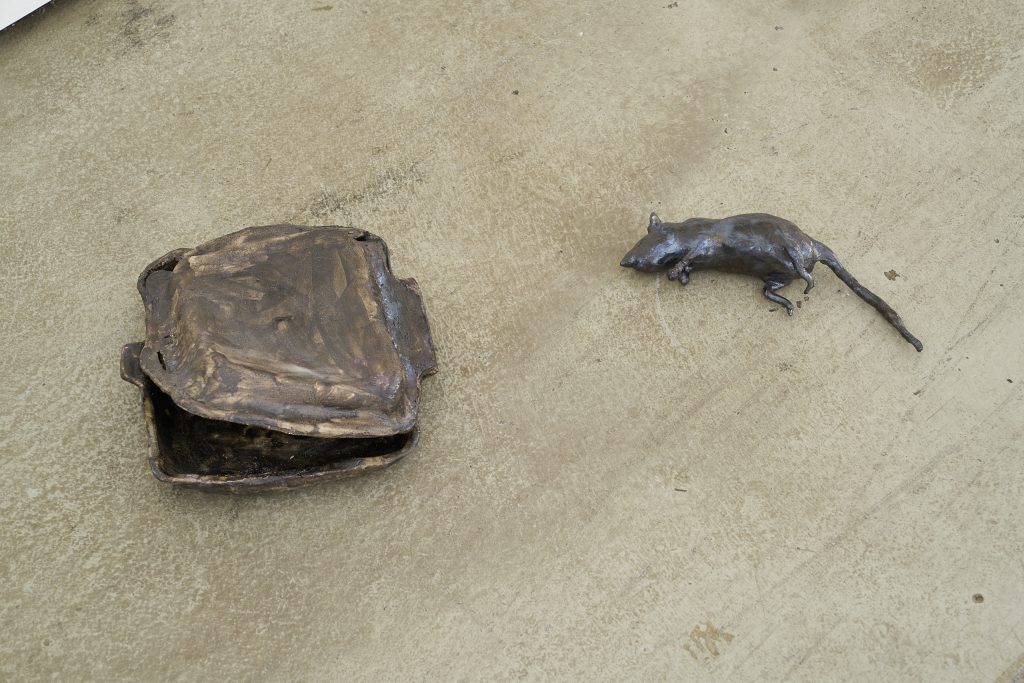
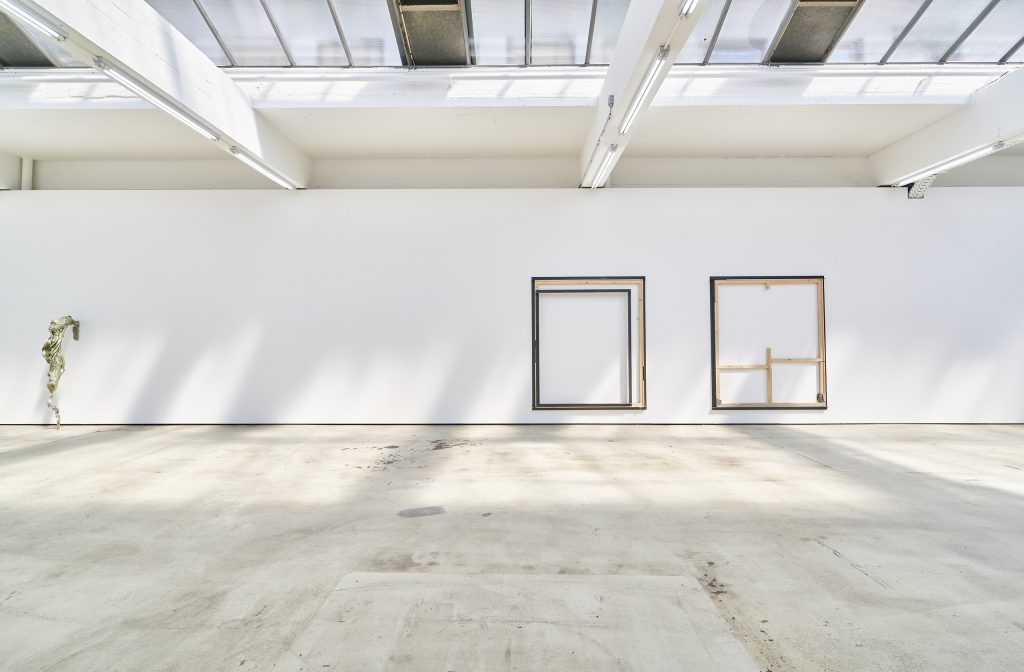
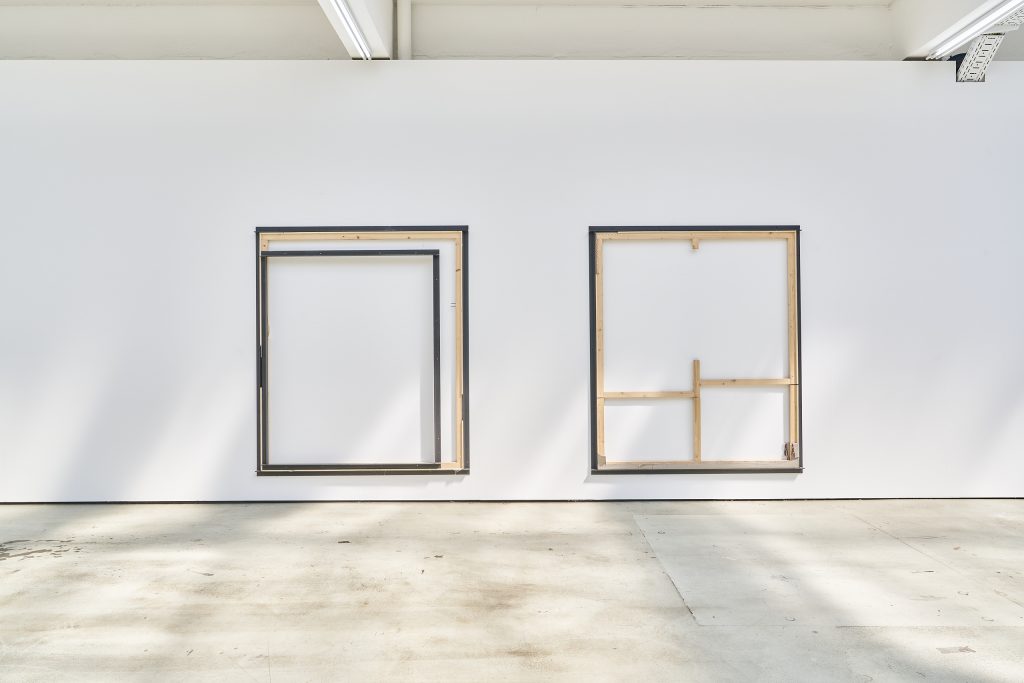
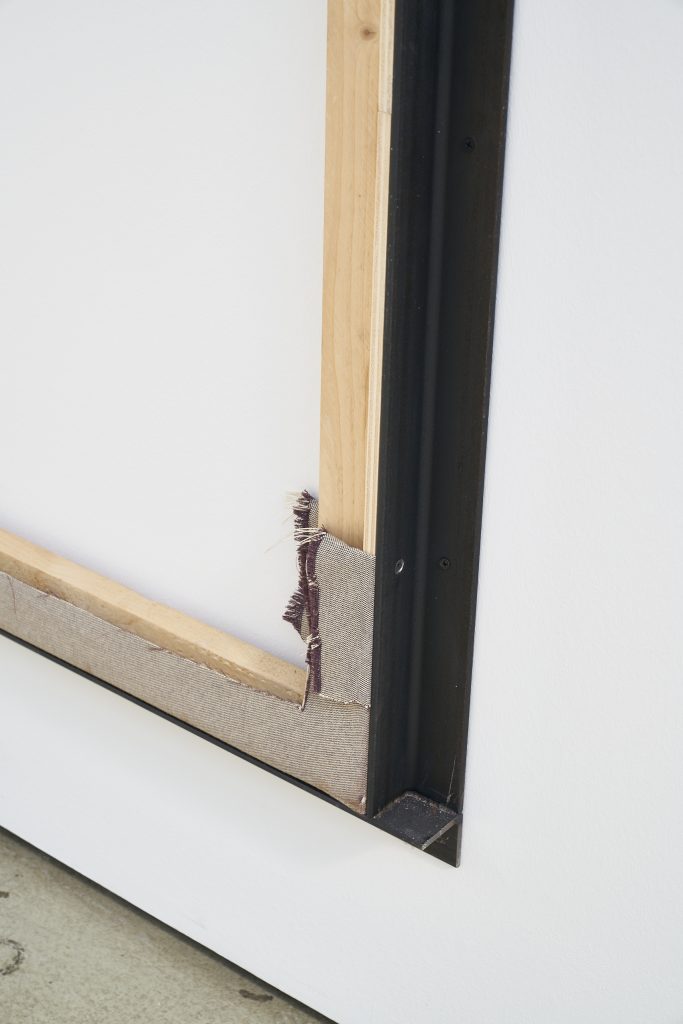
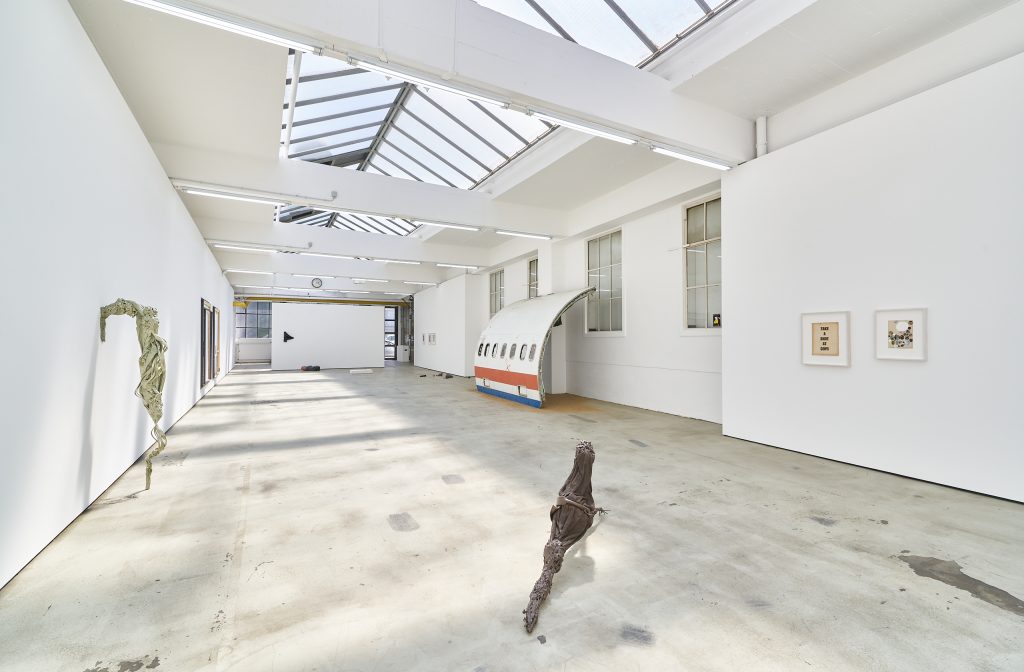
Works:
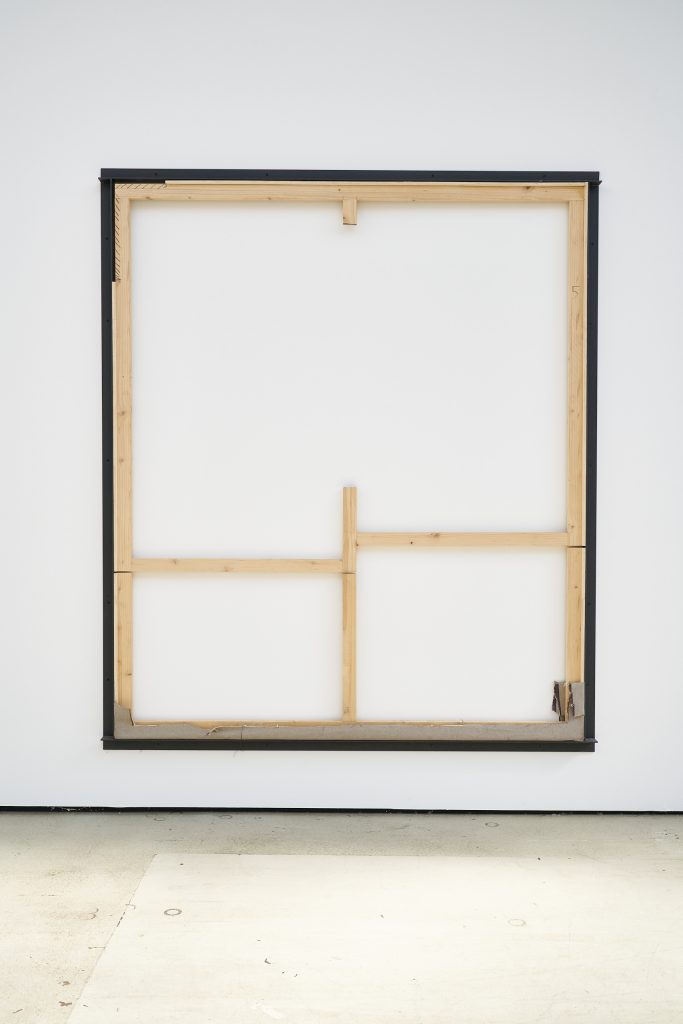
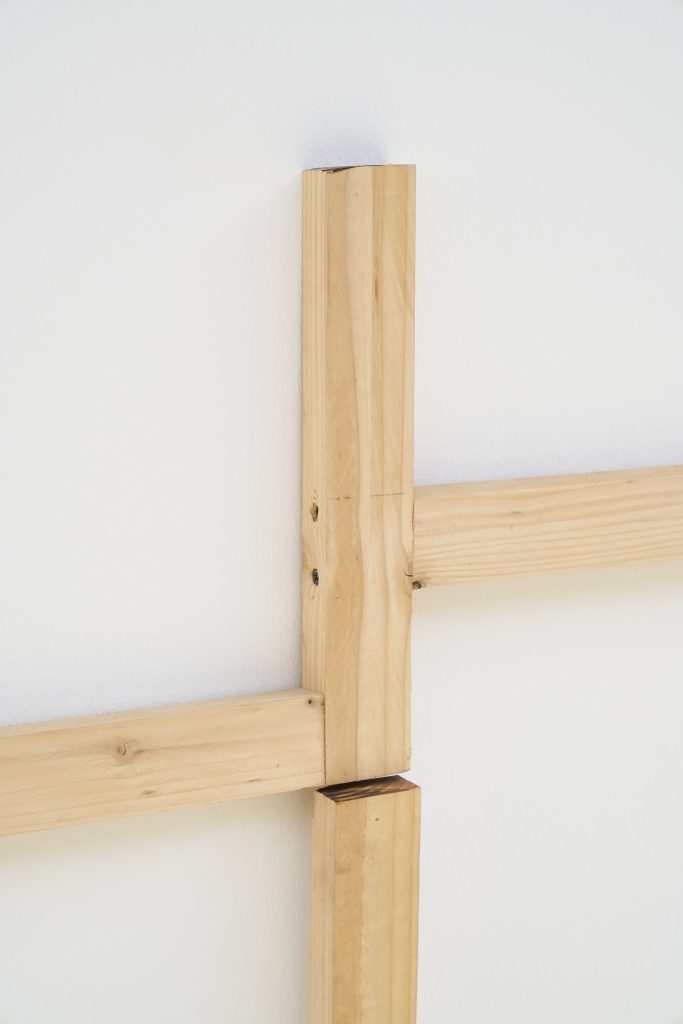


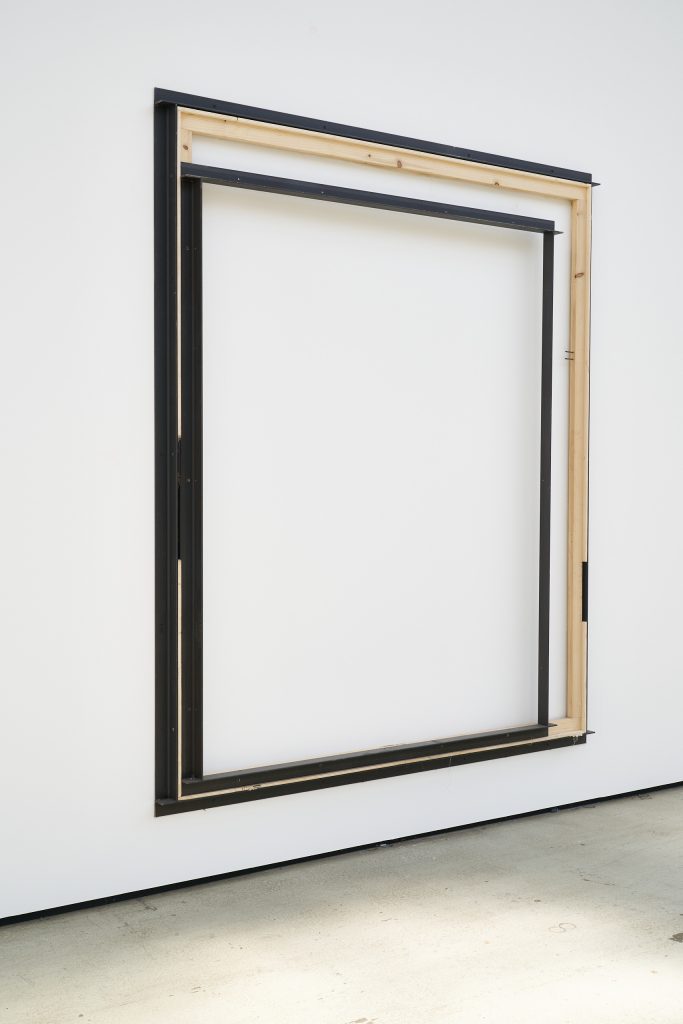
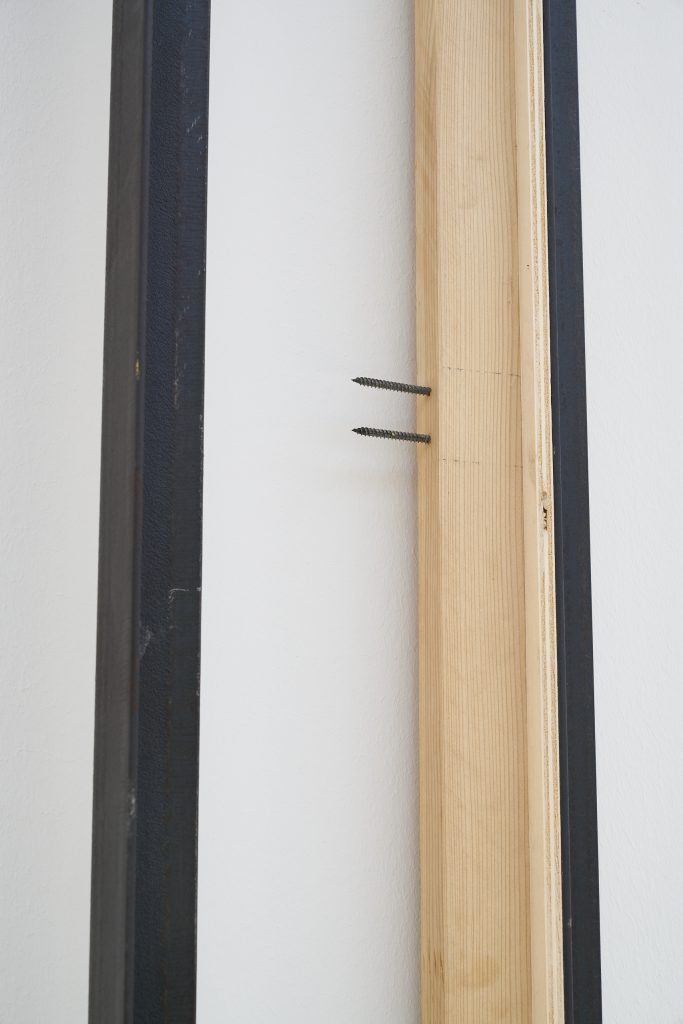

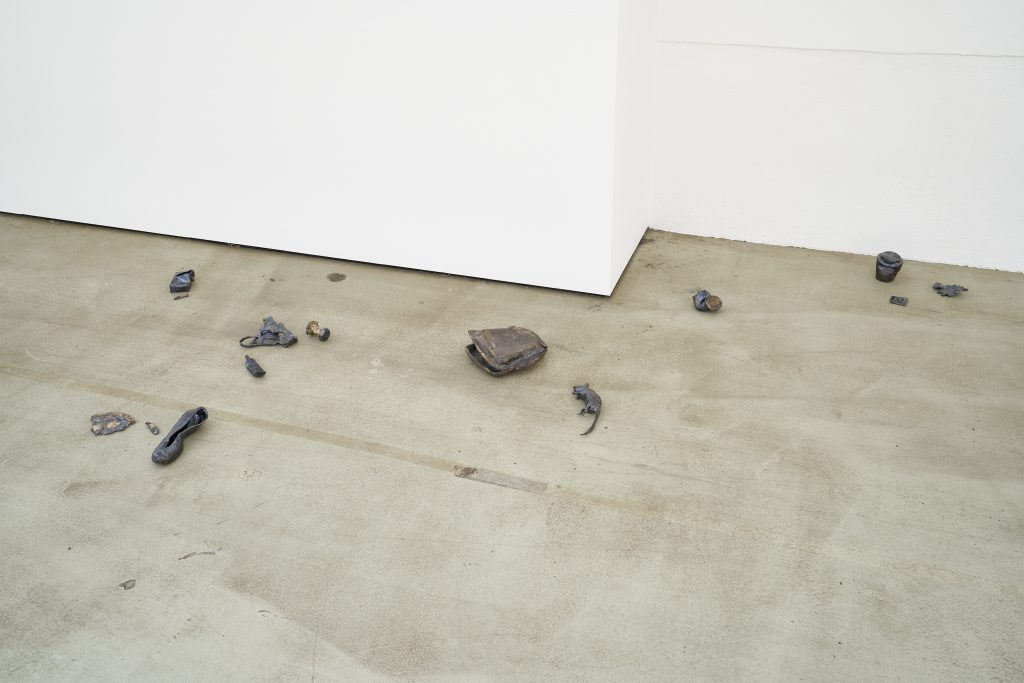

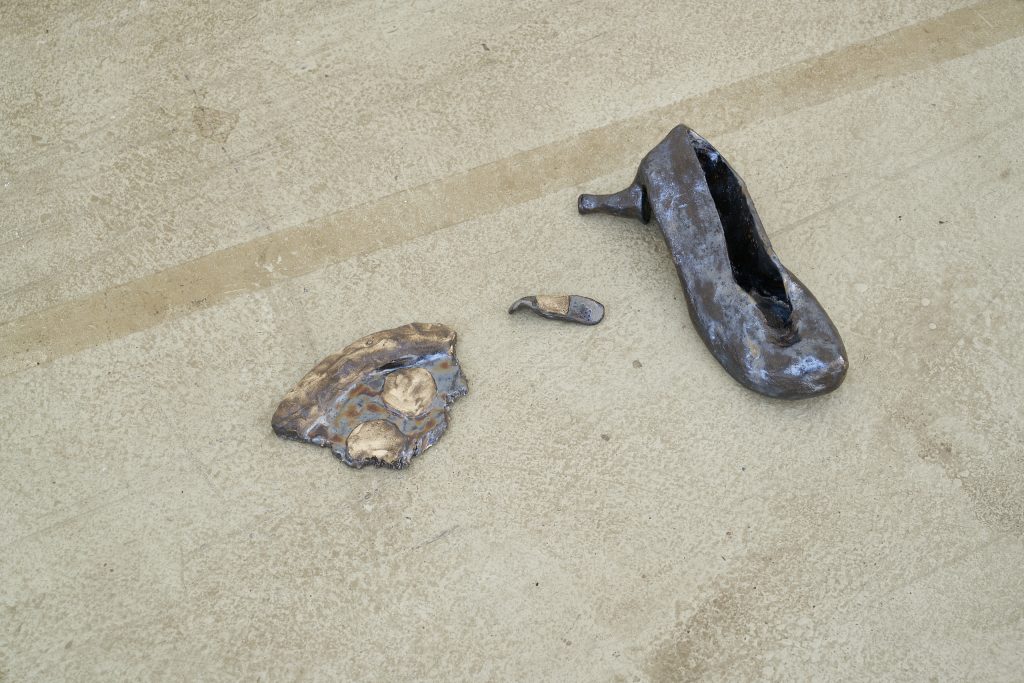
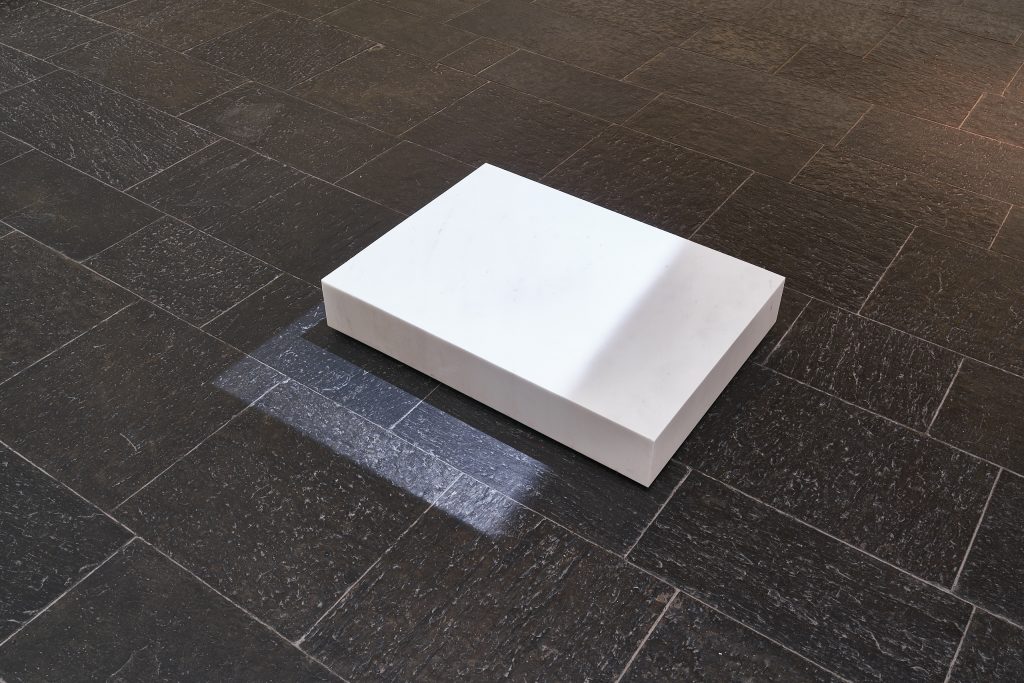
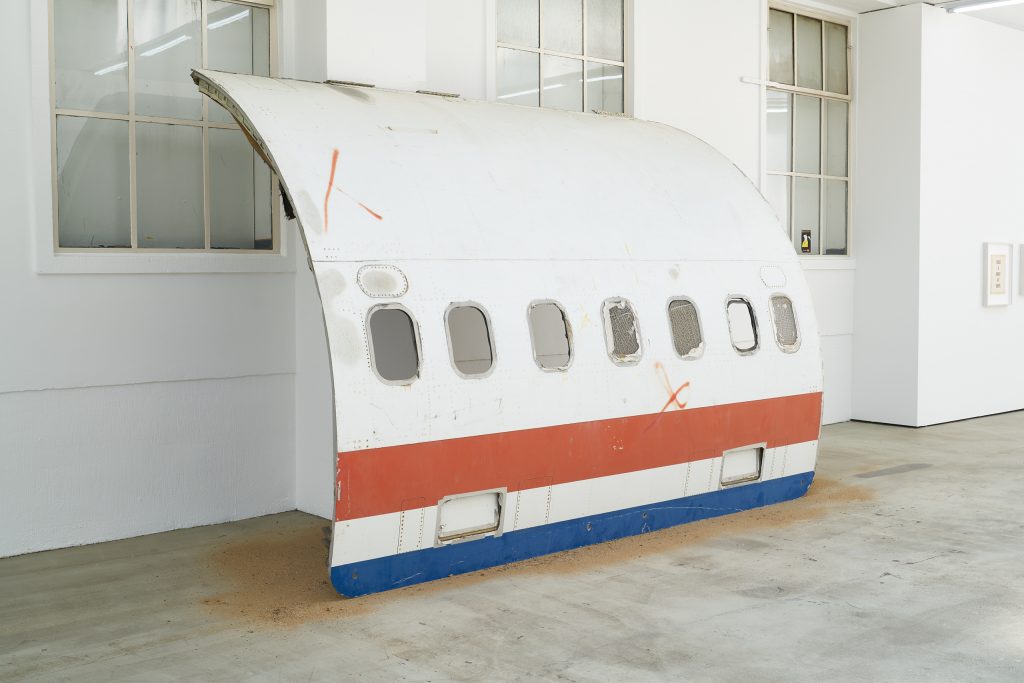
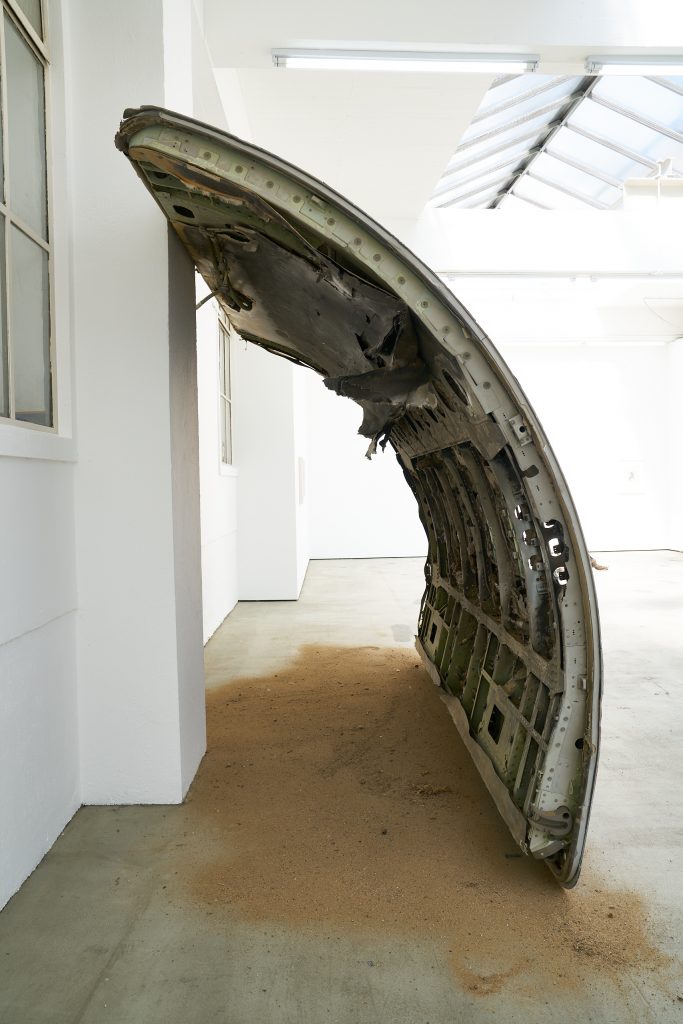



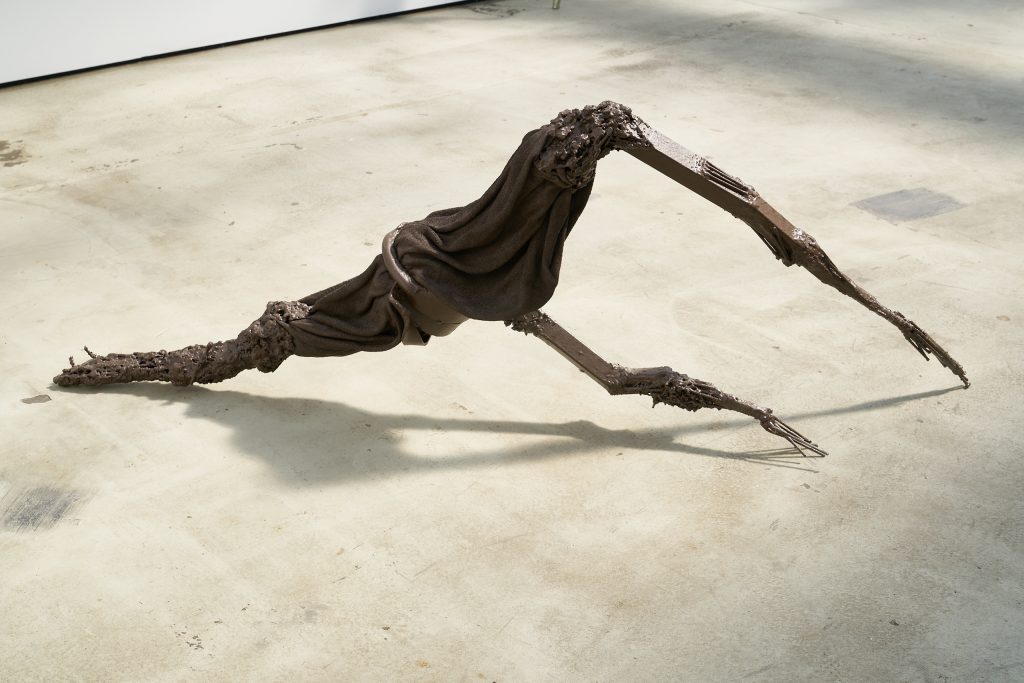
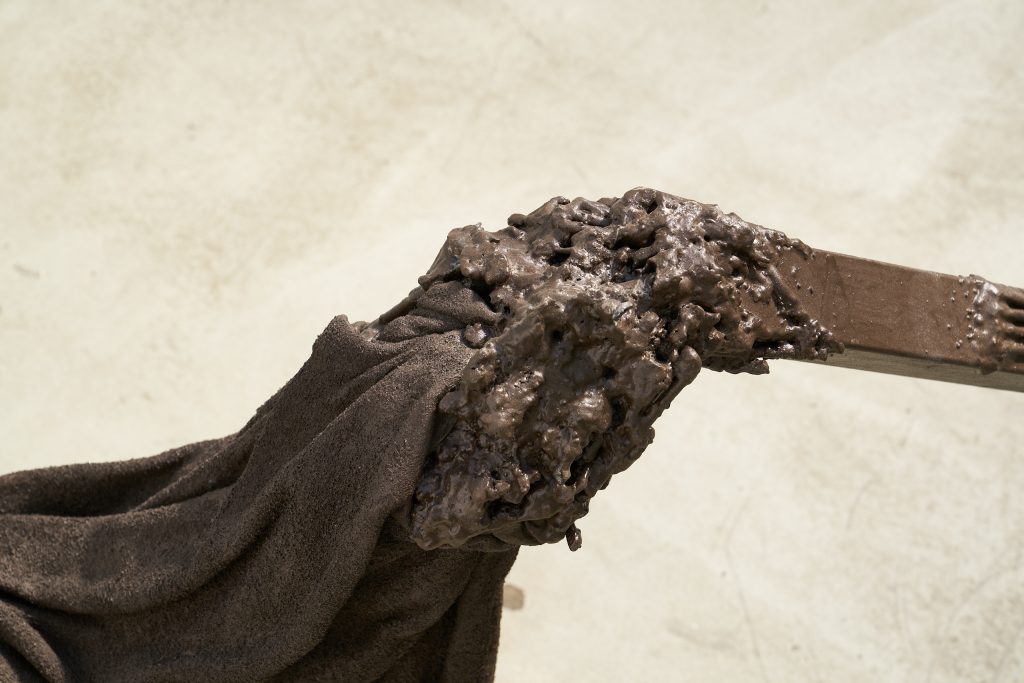

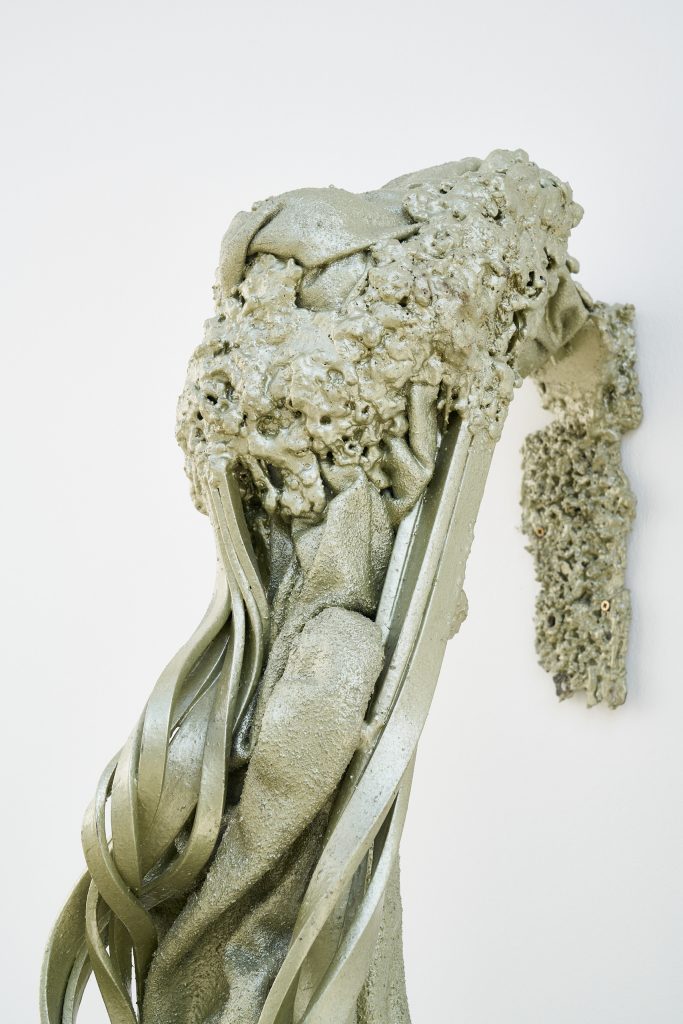

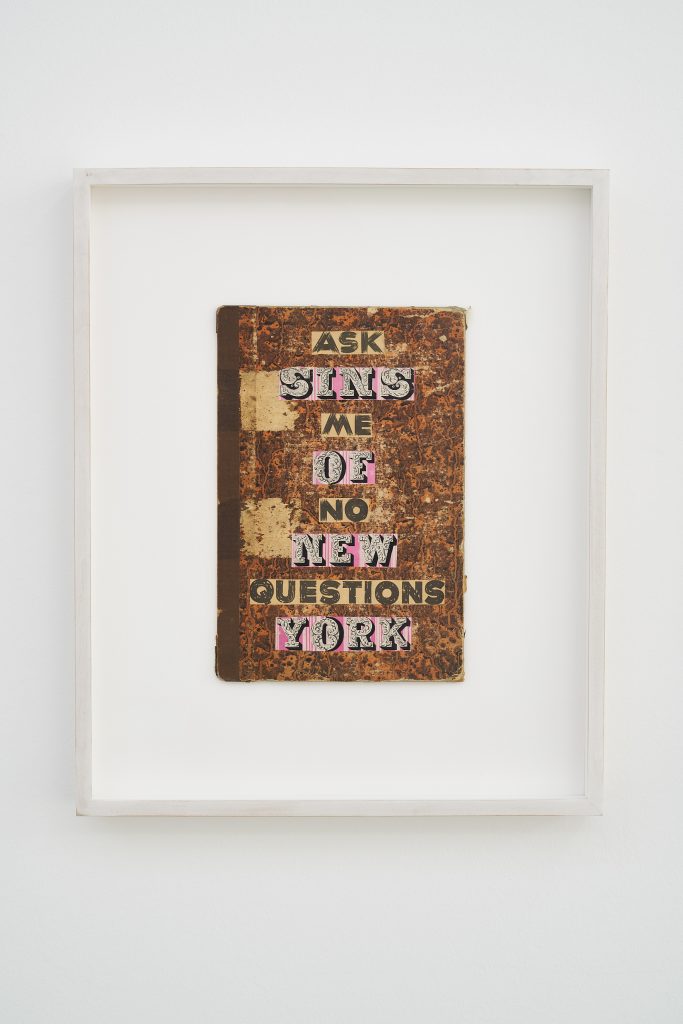
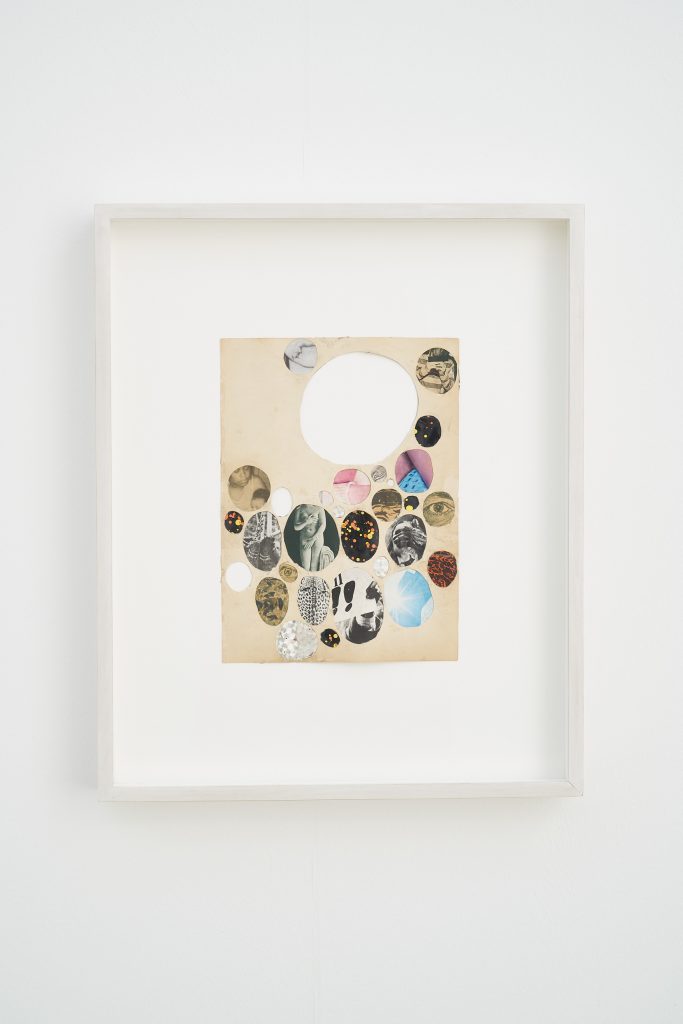
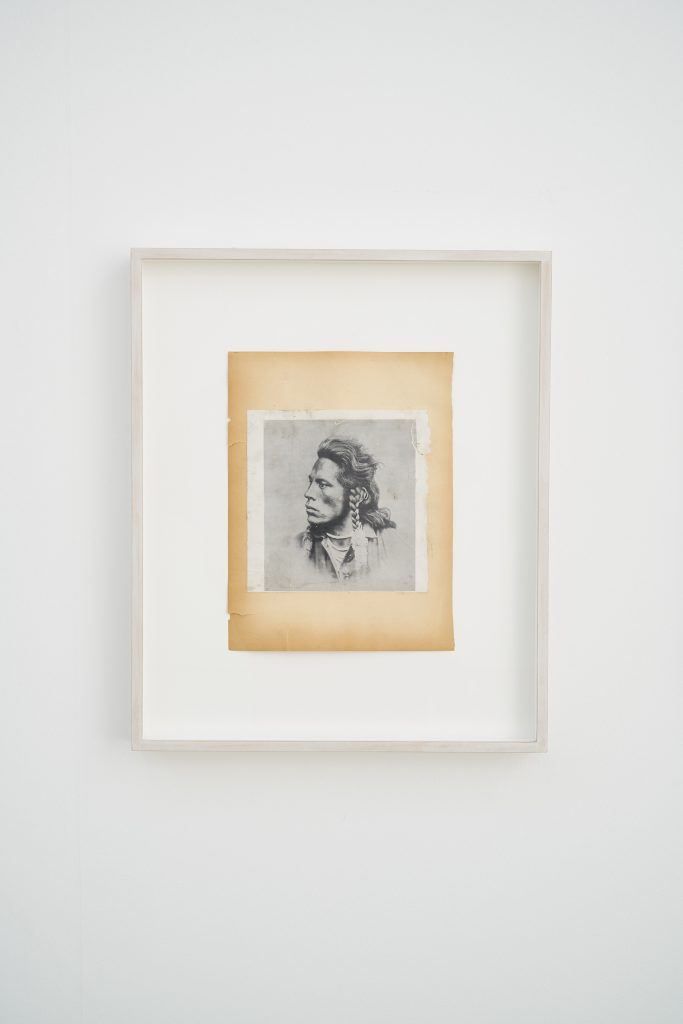
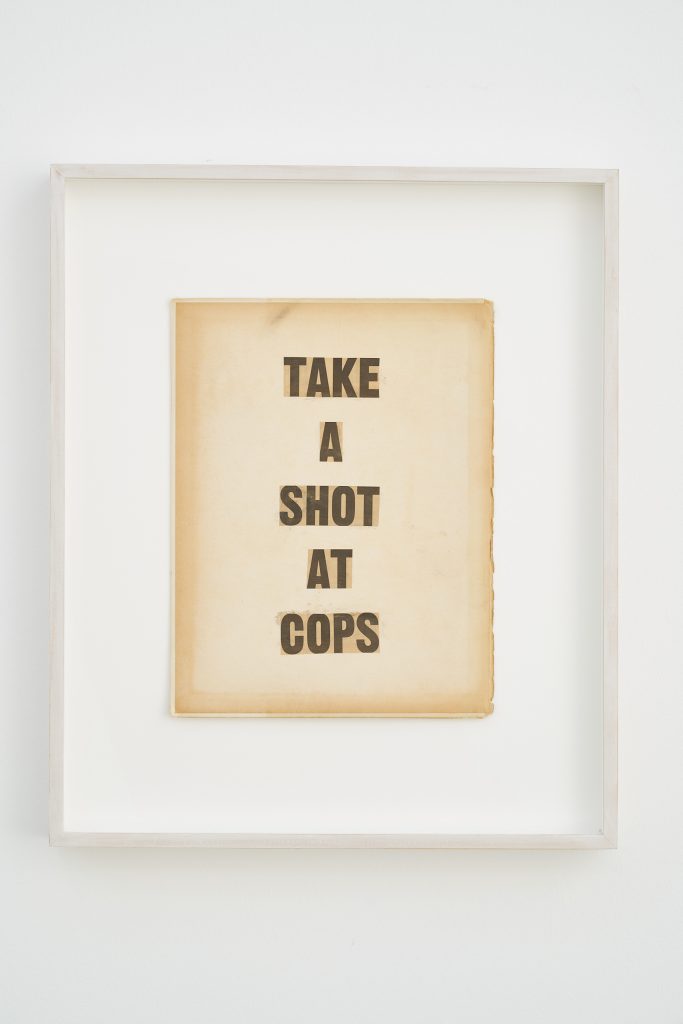
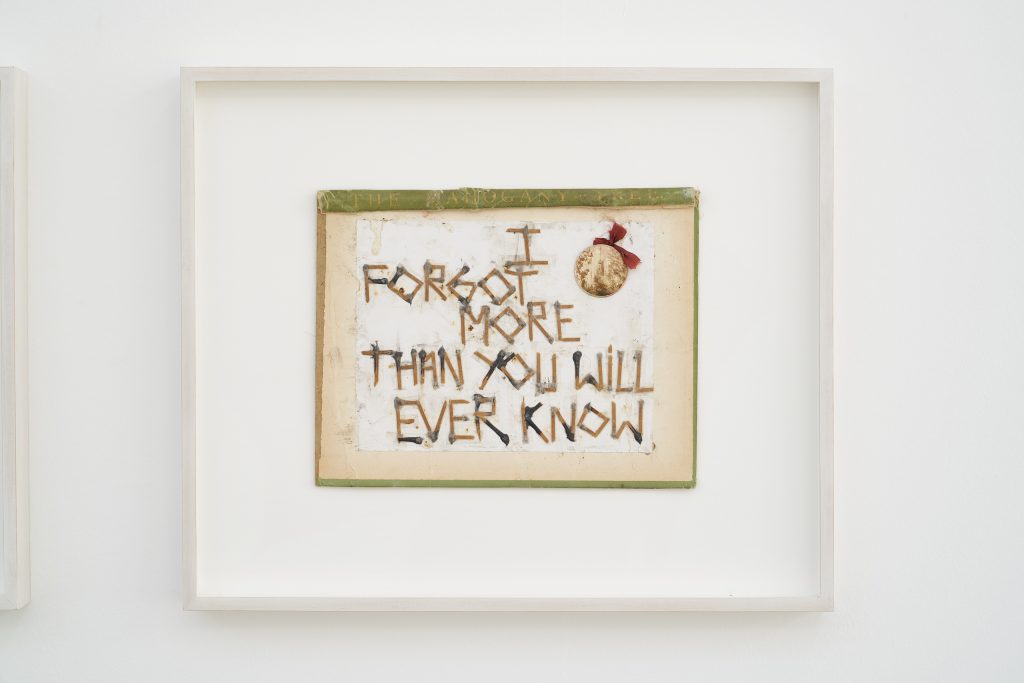
EXHIBITION TEXT ENGLISH:
grounded
12 June – 7 August 2021
Jonathan Binet, June Crespo, Lindsay Lawson, Johanna von Monkiewtisch, Michail Pirgelis, Dash Snow, Julie Villard & Simon Brossard
The so-called ‘ground of hard facts’ has a fundamental pitfall: It only bears if its foundation itself has a firm basis. The idea goes back to the age-old grounding debate of metaphysics, which recurs in waves. The goal of all its attempts to establish a foundation: to unravel the structure of reality in its foundations, to get to the bottom of the essence of reality. In doing so, classical metaphysical reasoning presupposes the existence of certain fundamental principles. Paradoxically, these are regarded as fundamental precisely when they are useful for justifying other fundamental principles but are themselves neither justified nor justifiable according to objective criteria. It is precisely the absence of their own ground that seems to make them viable as a foundation. If one doubts the resilience of a basis that justifies reality a priori, one inevitably looks into the bottomless pit that provides perfect nourishment for the post-factual tendencies of our present day. While postmodern thinkers established the dismantling of fundamental claims to truth, philosophy today is therefore again increasingly often concerned with defending truth (cf. Markus Gabriel) and once again giving humanism a bit of solid ground under its feet. For anyone who loosens the anchor of all factuality hangs in the air and becomes incapable of action, like David Bowie’s Major Tom: ‘Far above the world / Planet Earth is blue / And there’s nothing I can do.’
The current exhibition at the gallery Berthold Pott brings together works that reveal significant references to the ground. It is by no means about the one single existential ground underlying everything, about the one fundamental question that conditions everything. The ground here is basically always a different one, and often there seem to be several, viable grounds even within one work. In the sense of a new realism, a multitude of fields of meaning are opened up with their very own claims to truth, which naturally intersect, intertwine, and even collide with each other.
In the centre of the gallery space is a segment of a decommissioned Boeing 707. Michail Pirgelis uncovered it from the desert sand at the aircraft graveyard in the Mojave Desert in California. The soot-blackened interior of the work, as well as the surface of the outer skin, are marked by environmental influences – time has unmistakably inscribed its marks on the material. In addition, remnants of the Californian desert sand have accompanied the work, which bears the title Summer Camp and is installed in the exhibition space like a temporary, makeshift dwelling; scattered on the floor, it tells of the eventful past of a found object which, in its former life, travelled to many parts of the world.
With his works, Pirgelis pushes abstraction in such a way that, despite his intense engagement with industrial materials, their context of origin visibly disappears. The idea continues in the work Red Fingers, which is marked by a section of the American flag. As a result of deliberate framing, only three red stripes remain, deprived of their stars. Ready-made to make a lasting impression, Pirgelis’s objects have long since hijacked the potential meaning of their original context. Although they are neither directly from the sky nor far enough out of time, they are not least of all reminiscent of the conquest of the ‘ocean of the air’ that began a good hundred years ago – and revolutionised the view of the earth. In 1928, Hermann Hesse, an early guest of Lufthansa, the company name of which goes back to the aforementioned metaphor of the ocean, wrote: ‘The land of my youth lay whimsically unfolded below me, very wide, very colourful, Lake Constance shimmered pale.’ Or Antoine de Saint-Exupéry, roughly ten years later in Wind, Sand and Stars: ‘The airplane has unveiled for us the true face of the earth.’ From today’s perspective, Pirgelis’s works present themselves not least of all as expendable parts of that global frequent flyer programme that was recently interrupted more abruptly than ever before: Forced to take a months-long break in the wake of the pandemic, suddenly only a fraction of all Boeings and Airbuses were still in the air. Parking spaces for aircraft on the ground became correspondingly scarce, and their rear holds were filled with half a tonne of sand – ballast without which an unoccupied jet would be as cumbersome as many a metaphysical attempt at justification.
Directly opposite in the gallery space, Johanna von Monkiewitsch turns a monumental floor slab into a canvas, a screen for her otherwise immaterial sculpture. The marble pedestal, reminiscent of a classical plinth for a sculpture, becomes a projection surface and contrasts the shallow movement of the light that blows across the ground like the shawl of a light curtain. One can understand both the strengthening of the floor and the tilting of the perspective as a statement; one can find the play of light eerie or promising. Half tomb slab, half window to the sky (through which one does not see nothing, but rather everything – namely the sum of all colours, the white that is the mixture of all visible wavelengths), Monkiewitsch’s installation provides a view of something that, contrary to its spatial orientation, appears supernatural and rapturous.
In contrast, Lindsay Lawson’s small objects, which occupy a good square metre of floor space, are direct and worldly. The American artist went in search of grounds in her adopted hometown of Berlin and picked up what the pavements and streets had to offer. With unpretentious titles, the replicas of her found objects become bizarre souvenirs from the dirty metropolis. It is clear that the obligatory consumer criticism can be read into the dregs of urban city life. But instead of clumsily denouncing the ‘throwaway society’, Lawson’s carefully shaped objets trouvés made of glazed ceramics show a sensitivity for sediment, for the debris of everyday life, the oblique poetry of which can even flash up in discarded slices of pizza or pumps from the Berlin gutter.
The sculptures by the duo Julie Villard & Simon Brossard hardly seem everyday – but rather extra-terrestrial. One of the structures on view in the gallery seems to grow from the wall into the floor like a misguided stalactite. Tentacle-like, striving to connect with its structural surroundings, the algae-like plant remains extremely alien, its connection to the earth fragile. The title of the work, Love Human Smell, reinforces the impression of an alien in close contact with the blue planet. The structure next to it also seems to be still unfamiliar with the ground on which it is based. Carefully groping in front, balancing on a kind of tail extension at the back, the work Dressed Up gives the impression of searching in vain for grounding.
Further in the front of the exhibition space, a clay torso lies prone, as if it had just fallen off the dissection table. Flat on the floor and ostensibly destroyed – whether broken or brutally dismembered – only a washed-out T-shirt holds together what apparently once belonged together. June Crespo’s work explores the configurations of the self with a focus on the disruptive dynamics that constantly work against all of our personal integrity and physical intactness. For the artist, the human body is a self-contained but always broken form.
In the case of Dash Snow, whose work at first glance seems somewhat out of concept, the reference to the ground is initially of a biographical nature: As a descendant of the New York De Menil clan, the artist broke very early with the high society into which he was born and henceforth sought his own grounding in subculture and the underground. With the medium of collage, which was his favourite along with photography, Snow also chose a working method whose basic principle is to assemble decontextualised material on foreign backgrounds in such a way that new structures of meaning emerge – perhaps almost as he did for himself when he so resolutely broke away from his own social environment.
Jonathan Binet makes a radical cut of a different kind when he cuts a canvas from the stretcher frame in order to expose the latter together with the lath cross – in other words, the basic structure of the classical panel painting. In the view of the wall module behind it and its own ‘behind’ (the ‘edge of the picture’ gives a view into the front area of the exhibition space), there is a suggestion of a nesting of levels that is distantly reminiscent of the diagrams which Alfred North Whitehead once used to explain (meta)physical relationships of extension (cf. Whitehead: Process and Reality). To explain his elusive ideas of three-dimensional space, he used the image of the Russian matryoshka. This epistemological bottomless pit follows the same logic as the phenomenon of a ‘doll in a doll’ or a ‘picture in a picture’, also known as mise en abyme or the Droste effect. Every attempt at justification brings to light umpteen new grounds; every fall to the ground can uncover a new cosmos.
Anna Sinofzik
CVs
Jonathan Binet
Born 1984, lives and works in Paris.
Selected Solo Exhibitions: Palais de Tokyo, Paris, Palais de Terre, Paris, Bonner Kunstverein, Bonn, Carl Kostyal, London UK, Kunsthalle Sankt Gallen, CH, Art Basel Statements, CH, Gaudel da Stampa, Paris, Berthold Pott Cologne, Balice/Hertling, Paris, Spazio ORR, Milan, Italy (upcoming Sept. 2021), Noire Chapel, Turin, Italy (upcoming Sept 2021), duo presentation Art Cologne (Nov. 2021), Selected Group Exhibitions: BolteLang, Zurich, CH, Sans Titre, Paris, Union Pacific, London, UK, Museum Villa Rot, Burgrieden, Germany (upcoming July 2021), represented by BaliceHertling, Paris and Berthold Pott Cologne
June Crespo
Born 1982, lives and works in Bilbao, Spain.
Selected Exhibition: Heinrich Ehrhardt, Madrid, Spain, Parentescos, Mexico, Stereo, Warsaw, P420, Bologna, Italy, Centro Cultural Montehermoso, Vitoria, CarrerasMugica Gallery, Bilbao,
P-exclamation, New York, USA, represented by Heinrich Ehrhardt, Madrid and P420, Bologna
Lindsay Lawson
Born 1982 in Biloxi, USA, lives and works in Berlin.
Selected solo exhibitions: Platform Stockhom, Sweden, Lisa Kandlhofer, Vienna, Austria, Gillmeier Rech, Berlin, Agency, Toronto, Canada, 1646, The Hague, NL, Canapé, Auckland, Selected group exhibitions: Studio Berlin, Berghain, Berlin, Pina, Vienna, Austria, MAUVE, Vienna, Austria, Piktogram, Warsaw, Poland, Kunstverein Leipzig, Trafó Contemporary Art Center, Budapest, LeBlanc Chicago, USA, TEA Museum Tenerife, Bethanien, Berlin, Centre Pompidou, Paris, Herald St. London, UK, Tobias Naehring, Leipzig, Frutta, Rome, …, represented by Efremidis, Berlin
Johanna von Monkiewitsch
Born 1979 in Rome, lives and works in Cologne.
Selected exhibitions: Kunstmuseum Bonn, Germany (2020-2022), Kölnischer Kunstverein, Cologne, Kunsthalle Bremerhaven (March/April 2021), Kunstverein Bochum (May 2021), Photographisches Museum Braunschweig (2020), Leopold-Hoesch-Museum Düren (August-Nov. 2021), Museum PEAC, Freiburg (2020-2021), Museo Ca´Rezzonico, Venice, Italy (2018), Kunstraum Alexander-Bürkle, Freiburg, Museum für Konkrete Kunst, Ingolstadt, represented by Berthold Pott Cologne
Michail Pirgelis
Born 1976 in Essen, lives and works in Cologne.
Solo exhibitions include Braunsfelder, Cologne (2019, with Ruth Wolf-Rehfeldt), Leopold-Hoesch-Museum, Dueren (2016, with David Ostrowski), Autocenter Berlin (2015), and Artothek, Cologne (2011). In addition his work has been part of several group exhibitions such as Ludwig Forum, Aachen (forthcoming October 2020), DuMont Kunsthalle, Cologne (2019), Kunsthalle Nuremberg (2019), Haus N, Athens (2019), Riot Gent (2019), Athens Biennale (2018), Kunstverein Reutlingen (2018), Marta Herford (2018), Rubell Family Collection, Miami (2015), Istanbul Modern (2014),
-2-
Bundeskunsthalle Bonn (2013), Museum Morsbroich, Leverkusen (2012), Thessaloniki Biennale (2011), Kunstmuseum Bonn (2010), and Stadtmuseum Dusseldorf (2005). Pirgelis was shortlisted for DESTE Prize, Athens and 5×5, Castelló (both 2013). Numerous awards and fellowships include the Berlin Fellowship from Akademie der Künste, Berlin (2013), the Audi Art Award for ‘New Positions’ at Art Cologne (2010), the Adolf Loos Prize from the Van den Valentyn Foundation, Cologne (its first recipient ever, in 2008), and the Villa Romana Prize, Florence (2007). Represented by Sprüth Magers, Berlin
Dash Snow
1981-2009, New York, USA
Dash Snow was an American artist multi-media artist, known for work that embodied a rebellious, drug-fueled lifestyle. Working with photographs, collages, sculptures, and even his own semen, he created work that captured the hedonistic world of both himself and his social circle of artists, notably including Dan Colen, Nate Lowman, and Ryan McGinley. Snow developed his aesthetic during his youth, befriending street artists in Tompkins Square Park and the Lower East while illegally graffiting as a teenager. He began taking Polaroids as a way to document places he had been during black outs, and these photographs—capturing sex, drugs, and violence with candor—became a signature element in his work. Born on July 27, 1981 in New York, NY, Snow was from a family of prestigious art collectors and a descendant of the Schulmberger fortune, but clashed with and was estranged from much of his family. At a young age, Snow exhibited in the 2006 Whitney Biennial, and his works are collected by the Brooklyn Museum, the Whitney Museum of American Art in New York, and the New Museum in New York, among others. His career was cut short with „his death from a drug overdose on July 13, 2009 in New York, NY at the age of 27.
Julie Villard & Simon Brossard
Both born 1992 in Rome, live and work in Paris.
Selected solo exhibitions: Liste Art Fair, Basel, CH (2020) with ExoExo, Rabouan Moussion, Paris, ExoExo, Paris, Future Gallery, Berlin Selected Group Exhibitions: Exo Exo, Paris, High Art, Paris, Everyday Gallery, Antwerp, Boon Room, Paris, Damien and the Love Guru, Brussels, Belgium, Sophie Tappeiner, Vienna, Austria, Palais de Tokyo, Paris, represented by ExoExo, Paris
EXHIBITION TEXT GERMAN:
grounded
12. Juni – 7. August 2021
Jonathan Binet, June Crespo, Lindsay Lawson, Johanna von Monkiewtisch, Michail Pirgelis, Dash Snow, Julie Villard & Simon Brossard
Der sogenannte Boden der Tatsachen hat eine grundlegende Tücke: Er trägt nur, wenn sein Fundament selbst eine feste Grundlage hat. Der Gedanke geht zurück auf die uralte, wellenartig wiederkehrende grounding-Debatte der Metaphysik. Ziel all ihrer Begründungsversuche: die Struktur der Realität in ihren Grundfesten zu enträtseln, dem Wesen der Wirklichkeit auf den Grund zu gehen. Dabei setzt die klassische metaphysische Grundlegung die Existenz gewisser fundamentaler Prinzipien voraus. Paradoxerweise werden diese genau dann als fundamental aufgefasst, wenn sie zwar zur Begründung anderer Grundprinzipien taugen, selbst aber weder begründet noch nach objektiven Kriterien begründbar sind. Gerade das Fehlen des eigenen Grundes, scheint sie also als Grundlage tragfähig zu machen. Bezweifelt man die Belastbarkeit einer Basis, welche die Wirklichkeit a priori begründet, blickt man zwangsläufig in das Fass ohne Boden, das den postfaktischen Tendenzen unserer Gegenwart perfekte Nährgründe bietet. Während Denker der Postmoderne die Demontage grundlegender Wahrheitsansprüche etablierten, geht es der Philosophie deshalb heute wieder vermehrt häufig darum, die Wahrheit zu verteidigen (vgl. Markus Gabriel) und dem Humanismus ein bisschen festen Boden unter den Füßen zurückzugeben. Denn wer den Anker aller Tatsächlichkeit löst, der hängt in der Luft und wird handlungsunfähig, wie Bowies Major Tom: „Far above the world Planet Earth is blue And there’s nothing I can do.”
Die aktuelle Ausstellung in der Galerie Berthold Pott versammelt Werke, die wesentliche Bezüge zum Boden aufweisen. Dabei geht es keinesfalls um den einen existentiellen, allem zugrundeliegenden Grund, um die eine fundamentale Frage, die alles bedingt. Der Grund ist hier im Grunde immer ein anderer und häufig scheint es schon innerhalb einer Arbeit gleich mehrere, gangbare Gründe zu geben. Im Sinne des neuen Realismus wird eine Vielzahl von Sinnfeldern mit ganz eigenen Wahrheitsansprüchen aufgemacht, welche sich naturgemäß schneiden, verschränken, durchaus auch miteinander kollidieren.
Im Zentrum des Galerieraums steht das Segment einer ausrangierten Boeing 707. Michail Pirgelis hat es auf dem Flugzeugfriedhof in der Mojave Wüste in Kalifornien vom Wüstensand freigelegt. Die rußgeschwärzte Innenseite der Arbeit sowie die Oberfläche der Außenhaut sind von Umwelteinflüssen geprägt – unverkennbar hat die Zeit ihre Zeichen ins Material eingeschrieben. Zudem haben Reste des kalifornischen Wüstensands das Werk begleitet, das den Titel „Summer Camp“ trägt und im Ausstellungsraum ähnlich einer temporären, behelfsmäßigen Behausung installiert ist; am Boden verstreut erzählt er von der bewegten Vergangenheit eines Fundstücks, das im früheren Leben weite Teile der Welt bereiste.
Pirgelis treibt in seinen Arbeiten die Abstraktion voran, so dass trotz seiner intensiven Auseinandersetzung mit den industriellen Materialien deren Ursprungskontext zusehends verschwindet. Die Idee setzt sich in der Arbeit „Red Fingers“ weiter, welche von einem Ausschnitt der US-Flagge markiert ist. Infolge bewussten Framings bleiben nur drei rote Streifen, ihrer Sterne beraubt.
Ready-made to make a lasting impression haben Pirgelis‘ Objekte das Bedeutungspotential ihres ursprünglichen Bedeutungskontextes längst gekapert. Wenn auch weder direkt vom Himmel noch weit genug aus der Zeit gefallen, erinnern sie nicht zuletzt an die Eroberung des „Luftozeans“, die vor gut hundert Jahren begann – und den Blick auf die Erde revolutionierte. 1928 schrieb Hermann Hesse, ein früher Gast der Lufthansa, deren Name auf eben genannte Meeresmetapher zurückgeht: „Das Land meiner Jugend lag unter mir wunderlich entfaltet, sehr weit, sehr farbig, es schimmerte blaß der Bodensee.“ Oder Antoine de Saint-Exupéry, etwa zehn Jahre später in Wind, Sand and Stars: „The airplane has unveiled for us the true face of the earth.“ Aus heutiger Perspektive präsentieren sich Pirgelis‘ Arbeiten nicht zuletzt als Verschleißteile jenes globalen Vielfliegerprogramms, das vor Kurzem so jäh unterbrochen wurde, wie niemals zuvor: Im Zuge der Pandemie zu einer monatelangen Ruhepause gezwungen, war plötzlich nur noch ein Bruchteil aller Boeings und Airbusse in der Luft. Entsprechend knapp wurden die Parkplätze für Flugzeuge am Boden, deren hinteren Laderäume man mit einer halben Tonne Sand befüllte – Ballast, ohne den ein unbesetzter Jet ähnlich kopflastig wäre, wie mancher metaphysischer Begründungsversuch.
Gleich gegenüber im Galerieraum macht die Lichtbildnerin Johanna von Monkiewitsch eine monumentale Bodenplatte zur Leinwand, zum Screen ihrer ansonsten immateriellen Skulptur. Das marmorne Podest, welches an einen klassischen Bildhauersockel erinnert, wird zur Projektionsfläche und kontrastiert die seichte Bewegung des Lichts, das wie der Schal eines leichten Vorhangs übers Fundament weht. Man kann die Verstärkung des Bodens ebenso als Statement verstehen, wie das Kippen der Perspektive; kann das Lichtspiel gespenstisch oder verheißungsvoll finden. Halb Grabplatte, halb Fenster zum Himmel (durch das man nicht etwa nichts sieht, sondern vielmehr alles – nämlich die Summe aller Farben, das Weiß, das die Mischung sämtlicher sichtbaren Wellenlängen ist), gibt Monkiewitschs Installation den Blick frei auf etwas, das entgegen seiner räumlichen Ausrichtung überirdisch und entrückend erscheint.
Wie direkt und weltlich präsentieren sich dagegen die kleinen Objekte Lindsay Lawsons, die einen guten Quadratmeter Fußbodenfläche besiedeln. Die US-amerikanische Künstlerin hat sich in ihrer Wahlheimatstadt Berlin auf Bodensuche begeben und aufgelesen, was Bürgersteige und Straßen eben so hergeben. Mit unprätentiösen Titeln versehen werden die Nachbildungen ihrer Fundstücke zu skurrilen Souvenirs aus der dreckigen Großstadt. Klar, dass sich in den Bodensatz des urbanen Stadtlebens die obligatorische Konsumkritik hineinlesen lässt. Doch anstatt plump die Wegwerfgesellschaft anzuprangern, zeigen Lawsons liebevoll geformten Objets trouvé aus glasierter Keramik eine Sensibilität fürs Sediment, für die Ablagerungen eines Alltags, dessen schräge Poesie bekanntlich selbst in weggeworfenen Pizzastücken oder Pumps aus der Berliner Gosse aufblitzen kann.
Kaum alltäglich – eher extraterrestrisch – wirken die Skulpturen des Duos Julie Villard & Simon Brossard. Eins der Gebilde, die Berthold Pott zeigt, scheint von der Wand in den Boden zu wachsen wie ein fehlgeleiteter Stalaktit. Tentakelhaft danach trachtend, sich mit der baulichen Umgebung zu verbinden, bleibt das algenartige Gewächs extrem alien, seine Erdbindung fragil. Der Werktitel „Love Human Smell“ verstärkt den Eindruck eines Fremdlings auf Tuchfühlung mit dem blauen Planeten. Auch das Gebilde daneben scheint mit dem Grund, auf dem es fußt, noch zu fremdeln. Vorn vorsichtig tastend, hinten auf einer Art Schwanzfortsatz balancierend, macht das Werk „Dressed Up“ den Eindruck, vergeblich nach Erdung zu suchen.
Weiter vorne im Ausstellungsraum liegt ein tönerner Torso in Bauchlage, als sei er soeben vom Seziertisch gefallen. Flach am Boden und vermeintlich zerstört –
ob nun zerbrochen oder brutal zerteilt – hält hier nur ein verwaschenes T-Shirt zusammen, was offenbar mal zusammengehört hat. June Crespo untersucht mit ihrer Arbeit die Konfigurationen des Selbst mit Fokus auf die disruptiven Dynamiken, die unser aller persönlichen Integrität und physischen Unversehrtheit beständig entgegenwirken. Der menschliche Körper, für die Künstlerin: eine in sich geschlossene, aber immer auch gebrochene Form.
Im Fall von Dash Snow, dessen Werk hier auf den ersten Blick etwas aus dem Konzept fällt, ist der Bezug zum Boden zunächst biografischer Natur: Als Abkömmling des New Yorker De Menil-Clans brach der Künstler sehr früh mit der High Society, in die er hineingeboren wurde und suchte die eigene Bodenhaftung fortan in Subkultur und Underground. Mit dem Medium der Collage, das neben der Fotografie sein favorisiertes war, hat Snow zudem eine Arbeitsweise gewählt, deren Grundprinzip es ist, Dekontextualisiertes auf fremden Untergründen so zu montieren, das neue Bedeutungsgefüge entstehen – vielleicht beinahe so, wie für ihn selbst, als er sich so entschieden vom eigenen sozialen Umfeld gelöst hat.
Einen radikalen Cut anderer Art nimmt Jonathan Binet vor, wenn er eine Leinwand vom Keilrahmen schneidet, um letzteren samt Lattenkreuz – also die Grundstruktur des klassischen Tafelbilds – freizulegen. Im Blick auf das dahinterliegende Wandmodul und dessen Dahinter (der „Bildrand“ gibt die Sicht frei in den vorderen Bereich des Ausstellungsraums) deutet sich eine Verschachtelung von Ebenen an, die entfernt an Diagramme erinnert, welche Alfred North Whitehead einst zur Erläuterung (meta)physischer Ausdehnungszusammenhänge nutzte (vgl. Whitehead: Prozess und Realität). Um seine schwer fassbaren Ideen vom dreidimensionalen Raum zu erklären nahm er das Bild der russischen Matrjoschka zu Hilfe. Das erkenntnistheoretische Fass ohne Boden folgt derselben Logik, wie das Phänomen „Puppe in Puppe“ bzw. „Bild im Bild“, auch bekannt als Mise en abyme oder Droste-Effekt. Jeder Begründungsversuch befördert zig neue Gründe zutage, jedes Zugrundegehen kann einen neuen Kosmos freigeben.
Anna Sinofzik